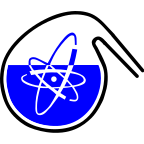Speaker
Description
Layered double hydroxides (LDHs) belonging to two-dimensional supramolecular systems are compounds of the composition [(M2+)1–x(M3+)x(OH)2]•[(An–)x/n•mH2O], where М2+ and М3+ are cations in oxidation states 2+ and 3+, respectively; An– is practically any anion or anionic complex. An advantage of LDHs over other layered compounds is the fact that various anions can be intercalated in their interlayer space, with the substitution of anions in the interlayer space occurring without break of the layered structure. The presence of М2+ and М3+ ions in the LDH structure suggests the possibility of ion exchange with cations of radioactive elements in aqueous solution.
Previously we studied the sorption of U(VI) onto LDH-М2+-М3+ (М2+ = Mg, Zn; М3+ = Al, Nd) and LDO-Mg-Al from aqueous solutions of various compositions. In all the studies, the synthesis of LDH-Mg, Zn, Al, and Nd containing various anions in the interlayer space took no less than 24 h. This is caused by the need for long recrystallization of the precipitate in the course of its formation and heating at 60–80°С. On the other hand, it is known that the use of microwave radiation (MWR) allows considerable acceleration of various physicochemical processes. In this connection, it was interesting to determine whether short microwave heating of a freshly formed LDH precipitate in the mother liquor can replace its prolonged heating at 80°С. In so doing, it was necessary to determine how the change in the synthesis procedure will influence the ability of the synthesized LDH to take up U(VI). The above problems became the subject of this study.
LDHs of Mg and Al, containing CО32– ions in the interlayer space (LDH-Mg-Al-CО3), and layered double oxides of Mg and Al (LDO-Mg-Al) were prepared using MWR. The use of MWR allows not only acceleration of the synthesis of both LDH and LDO, but also preparation of compounds with high kinetic characteristics of the U(VI) sorption. The degree of U(VI) sorption (α) from 10–2 mol/l aqueous U(VI) solutions at a sorption time of 4 h and V/m = 50 ml/g exceeds 99.0%. In sorption from more concentrated (10–1 mol/l) aqueous U(VI) solutions under similar conditions, α on all the samples does not exceed 37.5%.
It was found that the use of MWR in the synthesis of LDHMg-Al-CО3 and LDO-Mg-Al allows not only acceleration of the synthesis of both LDH and LDO, but also preparation of compounds with high kinetic characteristics of the U(VI) sorption.

